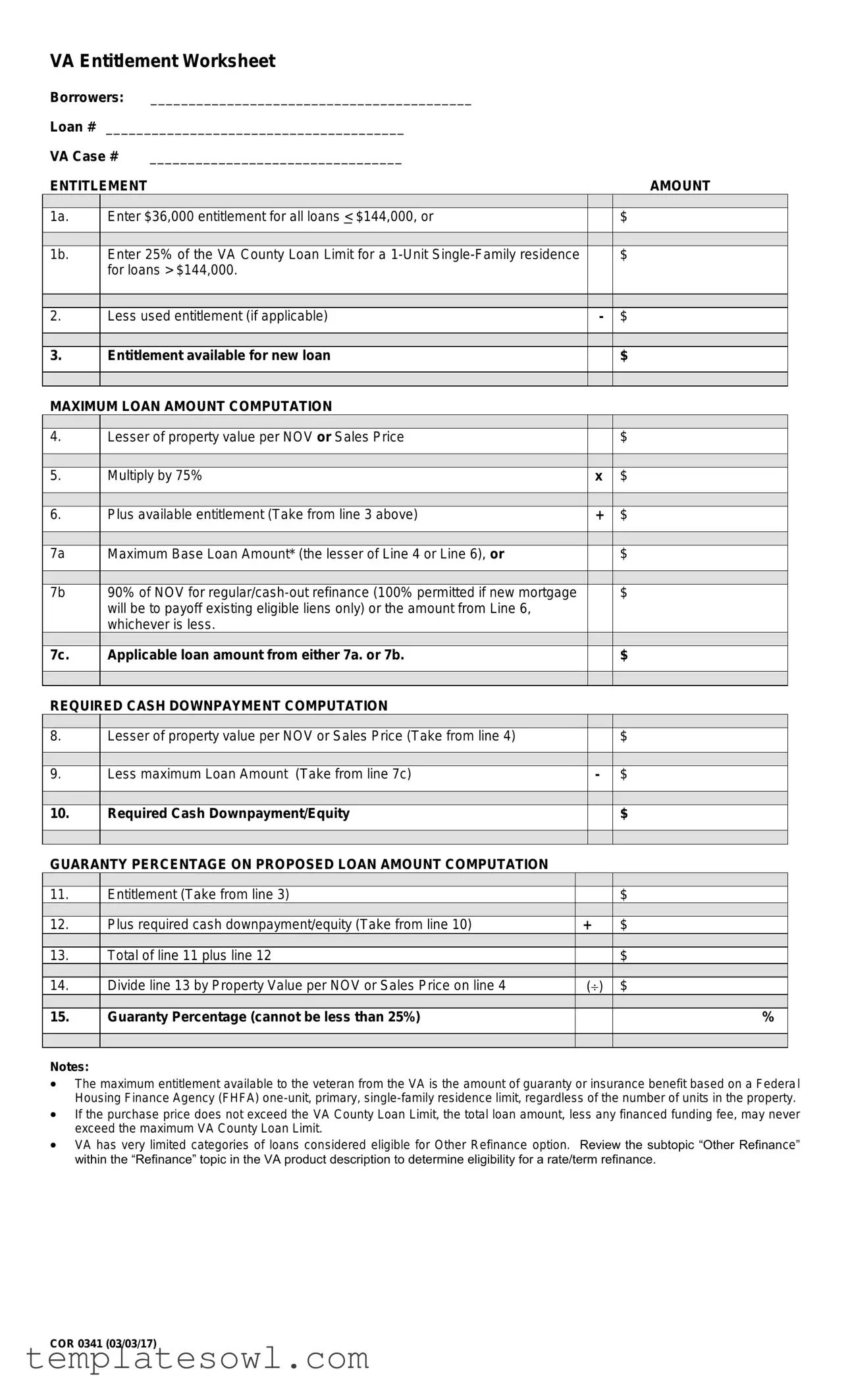What is the VA Entitlement Worksheet form?
The VA Entitlement Worksheet form is a document used by veterans and service members to calculate their entitlement for VA loans. It helps determine the amount of VA guarantee available for a new loan based on prior entitlement used and specific loan limits.
Who needs to fill out the VA Entitlement Worksheet?
Veterans, active-duty service members, and eligible surviving spouses planning to obtain a VA loan should complete this worksheet. It is important for anyone seeking to understand their eligible loan amount and entitlement status.
What is the purpose of the entitlement amount section?
This section helps borrowers assess their eligibility for a VA loan by outlining the different entitlement amounts. It asks for the choice between a flat amount of $36,000 or 25% of the VA County Loan Limit for loans greater than $144,000.
How is the maximum loan amount calculated?
The maximum loan amount is determined by comparing the property value or sales price to the available entitlement. Specifically, it involves multiplying the property value by 75% and then adding the available entitlement from the worksheet.
What factors affect the required cash down payment?
The required cash down payment is influenced by the lesser of the property value or sales price minus the maximum loan amount. This difference indicates how much cash the borrower must pay upfront to acquire the property.
What is the significance of the guaranty percentage?
The guaranty percentage represents the level of VA backing on the proposed loan amount. It is crucial as it indicates how much the VA is willing to guarantee, which impacts the loan's terms and conditions.
Can the guaranty percentage be less than 25%?
No, the guaranty percentage cannot be less than 25%. This minimum ensures that the VA provides significant backing to help veterans secure favorable loan conditions.
What happens if I have already used my entitlement?
If you have previously utilized some of your entitlement, that amount will need to be subtracted from the total entitlement available for new loans. This calculation is critical for understanding your current borrowing capacity.
Is there a difference in entitlement limits based on county?
Yes, entitlement limits can vary by county due to different housing market values. Each county has a specific VA County Loan Limit, which is taken into account when calculating available entitlement for a new loan.
What other resources are available for understanding VA loans?
For further insights, borrowers can consult the VA’s official website, specifically looking at topics related to refinancing options, and eligibility criteria. Local VA offices and approved lenders are also valuable resources for personalized assistance.

